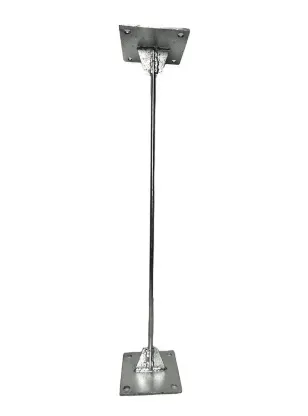loading...
- No. 9, Xingyuan South Street, Dongwaihuan Road, Zaoqiang County, Hengshui, Hebei, China
- admin@zjcomposites.com
- +86 15097380338
- Welcome to visit our website!
Understanding the Functions and Benefits of Well Pressure Tanks in Water Systems
Understanding Well Pressure Tanks An Essential Component for Water Supply Systems
A well pressure tank is a crucial element in water supply systems, especially in rural and suburban areas where households rely on private wells for their water needs. It serves to regulate and maintain water pressure, ensuring a consistent and reliable water supply for various domestic purposes such as cooking, cleaning, and irrigation. In this article, we will explore the operational principles, benefits, and maintenance of well pressure tanks, shedding light on their significance in modern water management.
At its core, a well pressure tank is designed to store water and maintain pressure within a plumbing system. It consists of a steel or fiberglass tank that contains a bladder or diaphragm, separating the water from the air compartment. When the water level in the well drops, the pump activates to fill the tank, while the air compresses, creating pressure. As water is drawn from the tank, the air pushes the water out, maintaining consistent pressure in the pipes.
One of the primary benefits of a well pressure tank is the regulation of water pressure. Without a pressure tank, the system would rely solely on a pump, constantly turning on and off as water is used. This can lead to fluctuations in pressure, causing inconvenience, and potential damage to plumbing fixtures. The presence of a pressure tank creates a buffer, allowing for more stable pressure levels and reducing wear and tear on the pump, which ultimately extends its lifespan.
Moreover, well pressure tanks can improve water delivery efficiency. By maintaining a reserve of water under pressure, they help meet immediate demands without the need for the pump to operate continuously. This is especially advantageous during peak water usage times, such as morning routines when multiple fixtures may be in use simultaneously.
well pressure tank

In addition to regulating pressure, well pressure tanks also contribute to energy efficiency. Frequent cycling of the pump not only increases energy consumption but can also lead to premature failure. By minimizing the number of cycles the pump undergoes, a pressure tank can help reduce electricity costs and prolong the equipment's lifespan. This makes it a smart investment for homeowners seeking to optimize their water supply systems.
Maintenance of well pressure tanks is relatively straightforward, yet essential for their longevity and functionality. Regular checks should be performed to monitor the air pressure in the tank. The ideal pressure typically hovers around 2 psi below the cut-in pressure of the pump. Ensuring that the air pressure is consistent will help maintain proper water pressure in the system. Additionally, homeowners should inspect the tank for any visible signs of rust, wear, or leaks, as these issues can compromise the tank's integrity and performance.
Another important aspect of maintenance involves replacing the tank when it reaches the end of its lifespan. While the durability of well pressure tanks can vary, many last between 5 to 15 years, depending on usage and environmental conditions. Keeping track of the tank's age will help homeowners plan for its replacement and avoid unexpected disruptions in water supply.
In conclusion, well pressure tanks are an integral part of a well water system, ensuring reliable and consistent water pressure for households. Their ability to stabilize pressure, enhance system efficiency, and save energy makes them invaluable for homeowners relying on well water. Proper maintenance and periodic assessments are vital to ensuring these tanks function effectively throughout their lifespan. By understanding the role and care of well pressure tanks, homeowners can better manage their water supply, ensuring a steady and reliable flow for their everyday needs.
-
The Rise of FRP Profiles: Strong, Lightweight, and Built to LastNewsJul.14,2025
-
SMC Panel Tanks: A Modern Water Storage Solution for All EnvironmentsNewsJul.14,2025
-
GRP Grating: A Modern Solution for Safe and Durable Access SystemsNewsJul.14,2025
-
Galvanized Steel Water Tanks: Durable, Reliable, and Ready for UseNewsJul.14,2025
-
FRP Mini Mesh Grating: The Safer, Smarter Flooring SolutionNewsJul.14,2025
-
Exploring FRP Vessels: Durable Solutions for Modern Fluid HandlingNewsJul.14,2025
-
GRP Structures: The Future of Lightweight, High-Performance EngineeringNewsJun.20,2025
